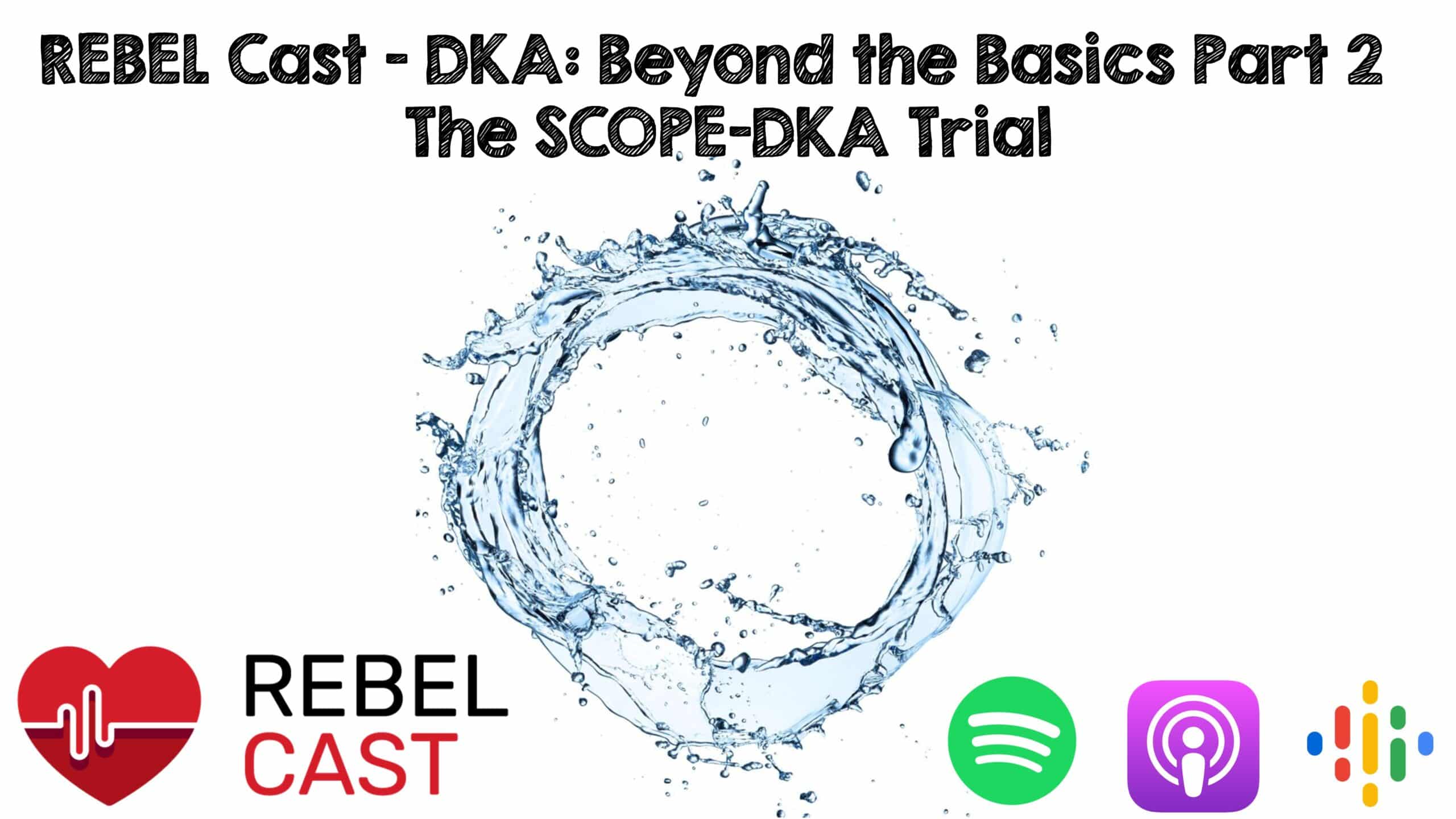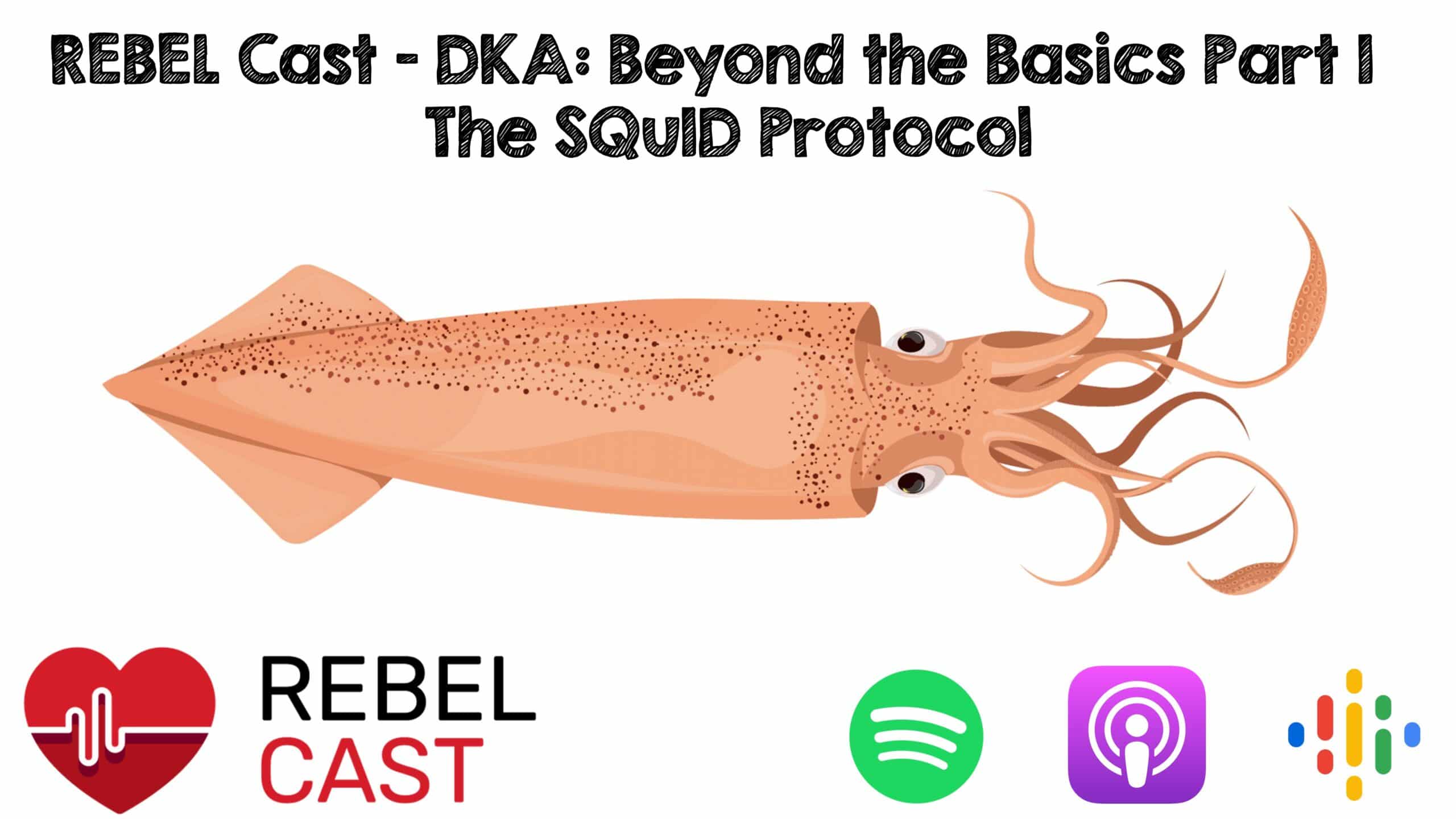Authors: Alex Koyfman, MD (@EMHighAK) and Brit Long, MD (@long_brit)
1) Our (near-)misses and unexpected positive ancillary studies have a heavy influence on our decision making. Really the question to ask is what red flags existed that we didn’t unearth and updating our cognitive approach for future patient care.
2) Enlarged cardiac silhouette on chest x-ray – differential diagnosis: uncontrolled hypertension; congestive heart failure; coronary artery disease; cardiomyopathy; valvular disorder; pulmonary hypertension; pulmonary embolism; COPD; pericardial effusion; aortic dissection; mediastinal mass.
3) Sick patient with DKA: Hyperkalemia kills; pay attention to magnesium and phosphorus as well. Acidemia kills; resuscitate aggressively and be prepared for a high-risk physiologic intubation. Remember, have a DDx for single-digit bicarb result. Lactate isn’t a prognostic marker unless they are septic as well. Consider and look for those sneaky infectious sources.
4) Acute limb ischemia: don’t overlook a full exam. Consider this diagnosis in your back pain patient with radicular pain. This belongs on your list of cellulitis mimics. Once you identify a potentially ischemic body part, make sure to trace it up and consider the etiology of the diagnosis. Know who can help in your system => vascular surgery, interventional radiology, interventional cardiology, podiatry, general surgery, etc. (note: this is true for all high-risk, low-incidence diseases; ask for help and be creative when a particular service is unavailable or unhelpful)
5) Cardiogenic shock: beware subtle presentation => slight change in mental status/behavior, cool extremities, etc. Look for etiology of patient’s presentation. Lean on bedside exam / echocardiogram and prior data points if available. Avoid negative inotropes. Consider amiodarone or digoxin for atrial fibrillation management.
6) Fever + petechiae DDx: meningococcemia; disseminated gonococcal infection; sepsis; endocarditis; TSS; viruses (i.e. Dengue); RMSF / ehrlichiosis; DIC; TTP; leukemia; vasculitis
7) For findings consistent with enterocolitis on CT abdomen/pelvis but absence of a compelling infectious history, consider a vascular etiology (e.g. ischemic colitis).
8) Sick patient associated with a dog bite: Capnocytophaga canimorsus. Consider immunocompromised condition. Antibiotic regimens to consider: ampicillin-sulbactam; ceftriaxone + metronidazole; piperacillin-tazobactam.
9) Majority of seizures we see respond to benzodiazepine administration. When they don’t we need to have a list of items that do this and an approach to managing them => underdosing of initial BZD; glucose emergency; electrolyte emergency; intracranial infection; CVST; ICH; ischemic stroke; brain mass; PRES; known epilepsy with specific treatment; eclampsia; CO tox; drug intoxication/withdrawal states; drugs that lower seizure threshold; isoniazid; TBI. (Note: not exhaustive but a solid start)
10) Most hypoglycemia responds to oral or IV dextrose administration. When it doesn’t we need to have a list of conditions and an approach to managing them => malnourished/poor access to food + ethanol; insulin / sulfonylureas / other meds; sepsis; adrenal insufficiency; liver disease; renal disease. (Note: again not exhaustive but an EM-centric start)
Further reading:










